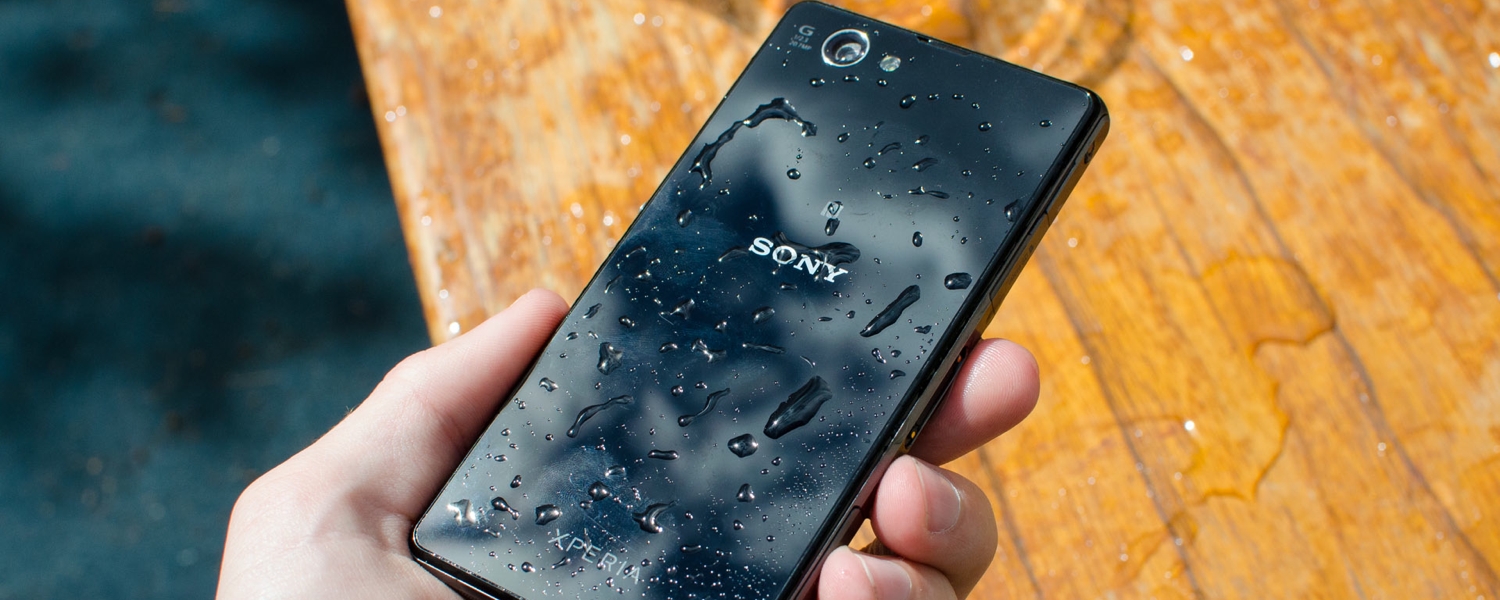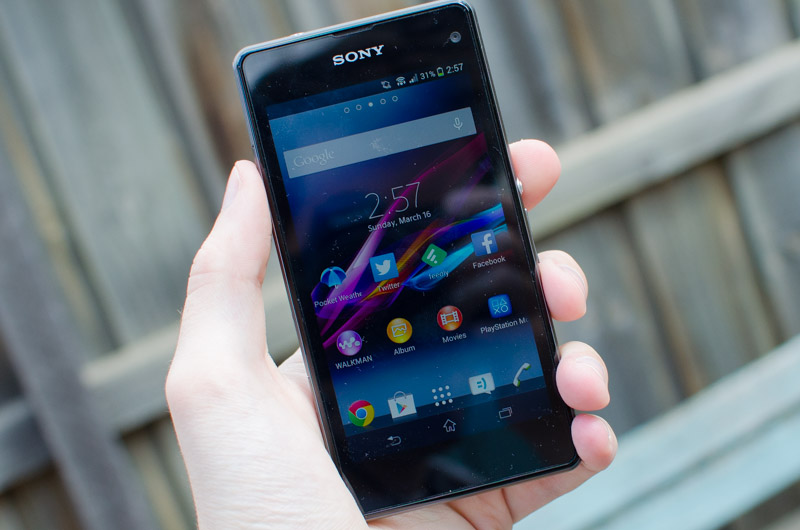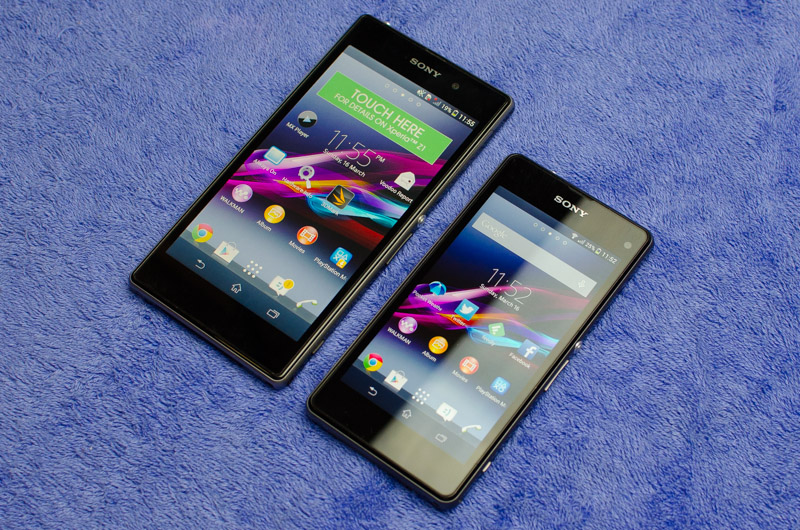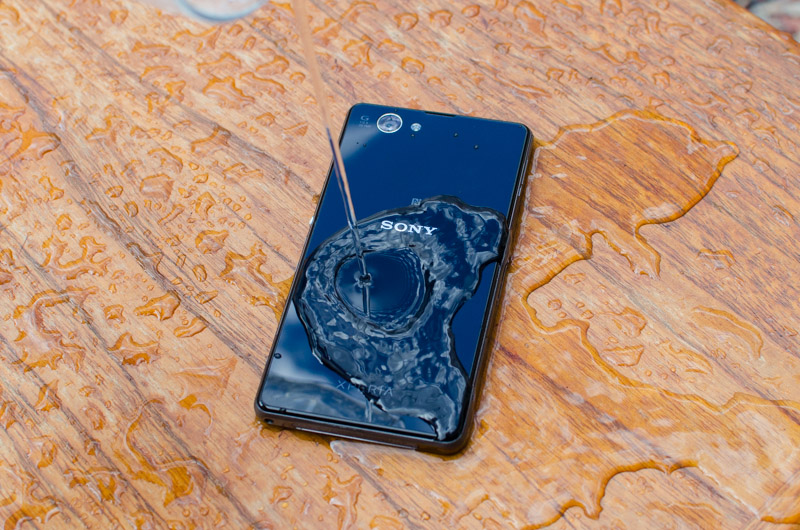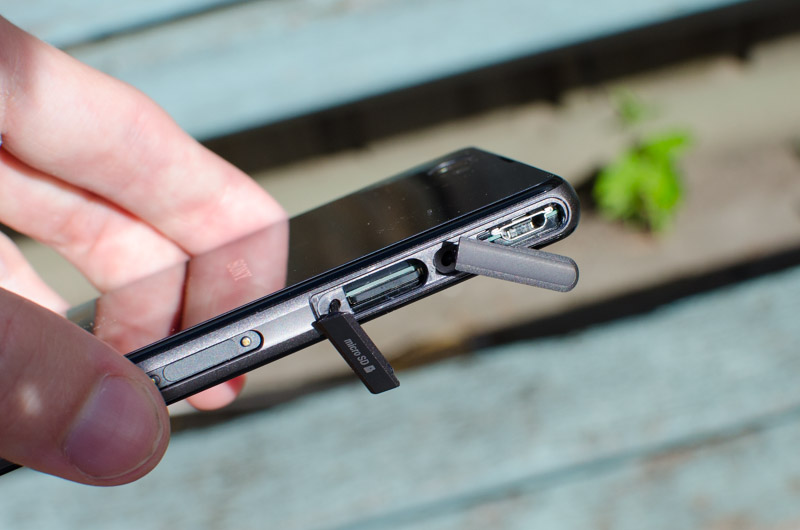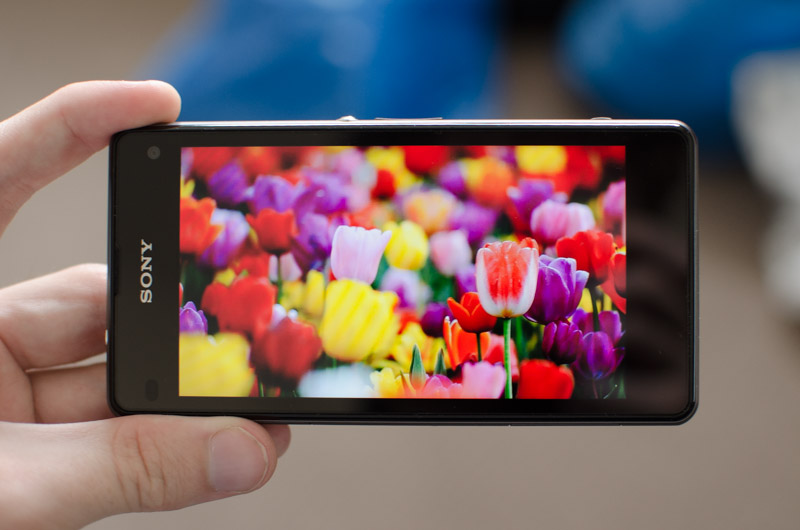In the world smartphones there have been typically two choices to go with: large-screened handsets with top-end specifications, and smaller devices with mid-range internals. Recently companies such as Samsung (with the Galaxy Mega) and Nokia (with the Lumia 1320) have shifted to producing large devices with weak specifications, but the complete opposite has been neglected. Simply put, there's very little choice for those who want a highly portable smartphone, but don't want to sacrifice the hardware inside to get it.
Sony Xperia Z1 Compact - $570 (unlocked)
- 4.3", 1280 x 720 LCD display (342 ppi)
- Qualcomm Snapdragon 800 SoC
- 2.15 GHz quad-core CPU, Adreno 330 GPU, 2GB RAM
- 16 GB internal storage, microSD card slot
- 20.7 MP camera, 1/2.3" sensor, f/2.0 lens, 1080p video
- IP58 water resistance
- 2,300 mAh, 8.74 Wh battery
- LTE, Wi-Fi a/b/g/n/ac, Bluetooth 4.0, NFC
- Android 4.3 'Jelly Bean'
- 137 grams, 9.5mm thick
Sony has an answer in the form of the Xperia Z1 Compact. Nearly everything about this smartphone is the same as its large-screened brother, the Xperia Z1. There's a powerful Qualcomm Snapdragon 800 SoC inside, a 20.7-megapixel rear camera, and a fully water resistant aluminium-glass build - but it's all in a body barely larger than its 4.3-inch display.
In Sony's eyes, this is a no-compromises, ultra-portable handset for those that don't want to carry around something with a 5-inch or larger display. It slots into a market with barely any competitors, especially if you're looking for something running Android, but is it worth a bundle of your hard-earned cash? Let's find out.
The Xperia Z1 Compact unit used in this review was kindly provided by MobiCity. They have the best range of unlocked, off-contract smartphones, and they ship to most countries globally.
Design
The Xperia Z1 Compact borrows from and expands on the style we first saw in the Xperia Z. The construction itself is most similar to last year's Xperia Z1, with a one-piece aluminium shell around the edges and large glass panels on the front and back. Different color options are available - including pink, yellow and white - although the particular unit I received was a fairly standard black.
The Z1 Compact's iteration of the Xperia Z design is the thickest yet, coming in at 9.5mm. There's no trickery in place to try and hide this thickness; the phone is essentially a slab of material with very little curvature. That's not to say it's a sharp handset, in fact it's tapered just enough to make it a very ergonomic device to hold, especially at its size. At 137 grams it's not the lightest phone going around, but the aluminium frame makes it feel strong and durable.
The combination of aluminium and glass gives the Xperia Z1 Compact a fantastic, premium look and feel as has been the case with many of Sony's past designs. The glass panel on the back looks great, but can be a fingerprint magnet, so be prepared to clean it often. There's also the increased risk of glass fracture from having the material on both the front and back, although if you're careful with the handset and apply the screen protectors included in the box, you should be fine.
Although the device is considerably smaller than the 5-inch Xperia Z1, and much more portable, the Z1 Compact's display coverage isn't amazing at just 62% thanks to moderate-sized bezels on both sides of the 4.3-inch display, and large bezels above and below. There are no capacitive hardware buttons on the Compact, with Sony opting for on-screen keys instead. Above, you'll find the front facing camera to the far right, sensors to the far left, and a speaker grill along the top.
One of my favorite features found in many Android devices, the notification light, is cleverly hidden inside the speaker grill. When you get a notification, this light will pulse green along the entire grill, and when charging it will glow red. The light appears to support other colors as well, allowing you to assign colors to specific notification types, although it's not capable of displaying the full RGB spectrum.
On the back of the Z1 Compact there's a small amount of Sony and Xperia branding, plus a handy NFC logo that tells you exactly where you need to place NFC sensors/devices for the connectivity to function correctly. At the top of the minimalist panel is the large camera lens next to the LED flash, and a small amount of text that describes the camera itself.
Sony continues to produce phones that are dust and water resistant, with the Z1 Compact being no exception. The handset comes with IP55 and IP58 ratings, meaning the device is dust protected, resistant to fresh water up to 1.5m deep for 30 minutes, and protected against water jets. This means you can spill water on the Z1 Compact, drop it in the bath, use it in the shower, and even swim with it in a pool for a short time.
While it's nice knowing that the Xperia Z1 Compact will survive if you accidentally drop it in your friend's pool, there's a few things to note. The touchscreen will not function if any water is on the screen, so it's nearly impossible to use the handset underwater or in a shower with a constant flow of water across the display. You can take photos underwater through the dedicated camera button on the smartphone, but you won't be able to adjust any settings as you do so.
The choice to water proof the device has had some flow on effects for other aspects of the design. The one you'll find most annoying is how the microUSB port must be covered behind a flap to prevent water ingress, meaning you'll need to uncover the port each time you want to charge the handset. This particular flap is at the top of the left-hand side, above the covered microSD card slot. Further down you'll find the micro-SIM slot, as well as the magnetic charging connector.
On the right side is the rounded, aluminium power button in the perfect position for regular operation, above the solid-feeling volume rocker. Towards the bottom of the edge is the two-stage camera button: a handy addition on a device with a fantastic camera. Along the device's top edge you'll find the 3.5mm audio jack, while the handset's main speaker occupies the entirety of the bottom edge.
The Xperia Z1 Compact's design certainly fits its premium hardware and price point. It's not the nicest or most well-polished smartphone design I've seen, but it's visually pleasing, ergonomic and as portable as you'd want from a phone intended to be compact.
Display
Packed into the Xperia Z1 Compact's frame is a 4.3-inch "Triluminous" TFT LCD display with a resolution of 1280 x 720, powered by a picture engine Sony calls "X-Reality". I'm not quite sure what type of LCD panel we're dealing with, but it appears to be using technology closer to IPS than TN. The 720p resolution is a downgrade from the 1080p panel on the Xperia Z1, but it still features a density of 342 pixels per inch (PPI).
This particular 4.3-inch LCD display is in some ways an improvement on the eIPS panel used in the Xperia Z1, but it doesn't reach the same level of quality as we've seen from other flagship handsets. When viewing items on the display that aren't enhanced by the X-Reality engine, which I'll talk about shortly, contrast and color gamut are somewhat lacking, and occasionally visuals appear washed out to an extent.
Straight out of the box, it's unlikely you'll notice these problems, because most of the time the display looks pretty good. However if you place the Z1 Compact next to a Nexus 5, you'll notice the display on the Z1 Compact is one notch behind, which is pretty typical for a Sony device. Looking at test patterns reveals a small amount of gradient banding and poor contrast: six of the final black values are indistinguishable, due to backlight bleed and pass-through.
The X-Reality engine is an interesting addition to the Xperia Z1 Compact's software stack, and it appears unchanged to previous iterations in flagship Sony devices. Essentially, the X-Reality engine marginally boosts saturation, increases sharpness and reduces grain when viewing images and videos. On the Z1 Compact, this effect is less pronounced than on previous Sony smartphones, but it does improve the way certain types of media look on the display.
However I'm still critical of the X-Reality engine for a number of reasons. Yes, it does improve the quality of photos and videos, but only in the stock applications included with the smartphone. If you want to watch a video through MX Player (a third-party app available in the Play Store) rather than the Movies app, the enhancements aren't applied. If you're just browsing around the operating system, the enhancements aren't applied.
For the X-Reality engine to be effective, it really should form part of the display controller and its firmware. The Z1 Compact's display is good, but not great, so it could really use the enhancements in all situations and across all applications. You can disable the X-Reality engine in the handset's display settings, but I never found a reason to do so, because it simply makes media look better.
The Xperia Z1 Compact has a white balance setting, which is a feature I haven't seen on a smartphone before, let alone one from Sony. The setting gives you three sliders for each RGB element, allowing you to fine tune the white balance exactly how you'd like it. Out of the box, the Z1 Compact's display is on the warm side of the spectrum; I prefer a display to target 6500K, so I increased the blue level to make the display appear whiter.
In terms of brightness, the Xperia Z1 Compact performs quite well. The top level of brightness is very adequate when combined with the screen's filtering and polarizing layers, for reading the display outdoors and in strong lighting. Automatic brightness is responsive and accurate, plus you can fine tune the brightness level without disabling the automatic adjust.
Density-wise we are looking at a panel with a resolution of 1280 x 720, or 342 pixels-per-inch at 4.3-inches. We're not looking at the 440+ PPI of 5-inch, 1080p displays, but it's very hard to distinguish individual pixels at a typical viewing distance, and everything on the smartphone looks clear and crisp. Of course you won't be able to watch 1080p content natively, and text doesn't look as paper-like as I've seen on high-end 1080p panels, but it's more than satisfactory for a device of this size and class.
The major area of improvement over the Xperia Z1's 5-inch display are the viewing angles. Where the Z1's display color shifts and washes out as soon as you tilt it to an off-normal angle, the Z1 Compact keeps readable. The Z1 Compact's viewing angles aren't the best I've seen, as there's a fair amount of brightness deviation, but the display is still readable when on a desk, for example.
The Xperia Z1 Compact's touchscreen also includes a high sensitivity setting called Glove Mode, allowing you to use the display with gloves on. Since this feature appeared in the Nokia Lumia 920, many other manufacturers have packed it into their handsets. On the Z1 Compact, high touch sensitivity works well: I was able to use the touchscreen with several layers of fabric over my fingers, and when the phone thinks its ability to sense your fingers is decreased, it shows you the general area of your press with a circle.
I wouldn't keep Glove Mode turned on all the time though, as it will consume a greater amount of power, and thus reduce your battery life. Only enable it as necessary.
